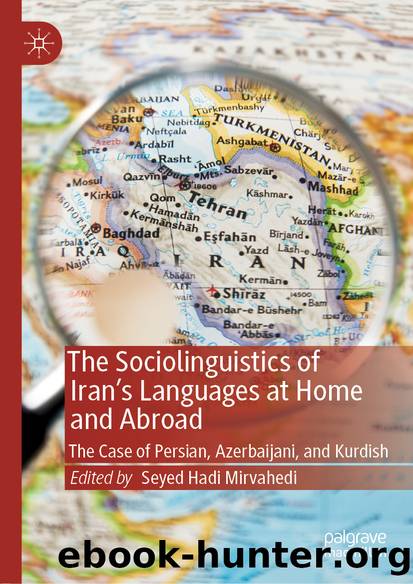The Sociolinguistics of Iranâs Languages at Home and Abroad by Unknown

Author:Unknown
Language: eng
Format: epub
ISBN: 9783030196059
Publisher: Springer International Publishing
MT and MTE in Denmark
The national context of the present study is Denmark. MTE has a complex tradition in Denmark affected by the overall political shifts with respect to interest in guest laborers (gæstearbejdere) in the 1960s and 1970s from Yugoslavia, Turkey, and Pakistan and to the arrival of refugees and skilled workers from multiple originsâincluding Iranâin subsequent decades. Since 1975, MTE (modersmÃ¥lsundervisning) has been presented as an institutional term compared to education in minority languages (mindretalssprog) (Holmen & Jørgensen, 1998). Children of speakers with ethnic backgrounds other than Danish have been MT speakers, regardless of their linguistic command in the MT and âlevels of knowledgeâ (Blommaert & Backus, 2011). Over the years, MT classes were catered for MT students by municipals; the Danish Ministry of Education defined the children eligible for the subject as children with a maternal language other than Danish who learn Danish not before their contact with Danish official institutions and society (UNI.C Statistics and Analysis for the Danish Ministry of Education, 2008, p. 48).1 Children with this eligibility were and still are called bilingual pupils. The term is, however, rather a normalized and idealized term that limits spaces and boundaries specified for language practice, for example, home language, institutional language, and the like. It also denies the complex world of language users with access to multiple languages, vernaculars, and lects, undermines familiesâ access to a diversity of media and the digital world, and ignores the imbalance of language exposure and language skills in childrenâs everyday worlds, including core families. If supported by the state and municipals, MTE composed of limited languages has been offered primarily by childrenâs schools outside the ordinary curriculum.
However, policy shifts and the perception of an unstable position of MTs and MT courses have highly encouraged communities, community-based associations, and individuals to start their MT courses within several municipalities or regions for the sake of familiesâ regular access.
This study reports on sequences from two MT classes in two different municipalities in the capital region of Denmark. Both classes were established by two local associations of the larger Iranian community, living in and around Copenhagen. In Denmark, approximately 21,180 Iranians and their descents live, with different interests in establishing and maintaining bonds to the linguistic and cultural heritage of Iran.2 The MT classes involved in the study shared the same teacher and represented a typical institution that privately promoted Persian as an MT for those with diverse Iranian origins.
The following section presents the theoretical framework based on which the study data will be analyzed and discussed.
Download
This site does not store any files on its server. We only index and link to content provided by other sites. Please contact the content providers to delete copyright contents if any and email us, we'll remove relevant links or contents immediately.
What's Done in Darkness by Kayla Perrin(25499)
Shot Through the Heart: DI Grace Fisher 2 by Isabelle Grey(18219)
Shot Through the Heart by Mercy Celeste(18160)
The Fifty Shades Trilogy & Grey by E L James(17774)
The 3rd Cycle of the Betrayed Series Collection: Extremely Controversial Historical Thrillers (Betrayed Series Boxed set) by McCray Carolyn(13189)
The Subtle Art of Not Giving a F*ck by Mark Manson(12911)
Scorched Earth by Nick Kyme(11831)
Stepbrother Stories 2 - 21 Taboo Story Collection (Brother Sister Stepbrother Stepsister Taboo Pseudo Incest Family Virgin Creampie Pregnant Forced Pregnancy Breeding) by Roxi Harding(11040)
Drei Generationen auf dem Jakobsweg by Stein Pia(10216)
Suna by Ziefle Pia(10185)
Scythe by Neal Shusterman(9259)
International Relations from the Global South; Worlds of Difference; First Edition by Arlene B. Tickner & Karen Smith(8608)
Successful Proposal Strategies for Small Businesses: Using Knowledge Management ot Win Govenment, Private Sector, and International Contracts 3rd Edition by Robert Frey(8419)
This is Going to Hurt by Adam Kay(7693)
Dirty Filthy Fix: A Fixed Trilogy Novella by Laurelin Paige(6453)
He Loves Me...KNOT by RC Boldt(5804)
How to Make Love to a Negro Without Getting Tired by Dany LaFerrière(5378)
Interdimensional Brothel by F4U(5304)
Thankful For Her by Alexa Riley(5161)
